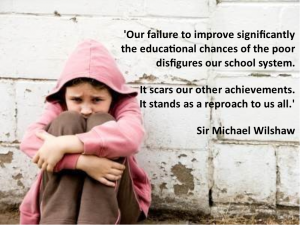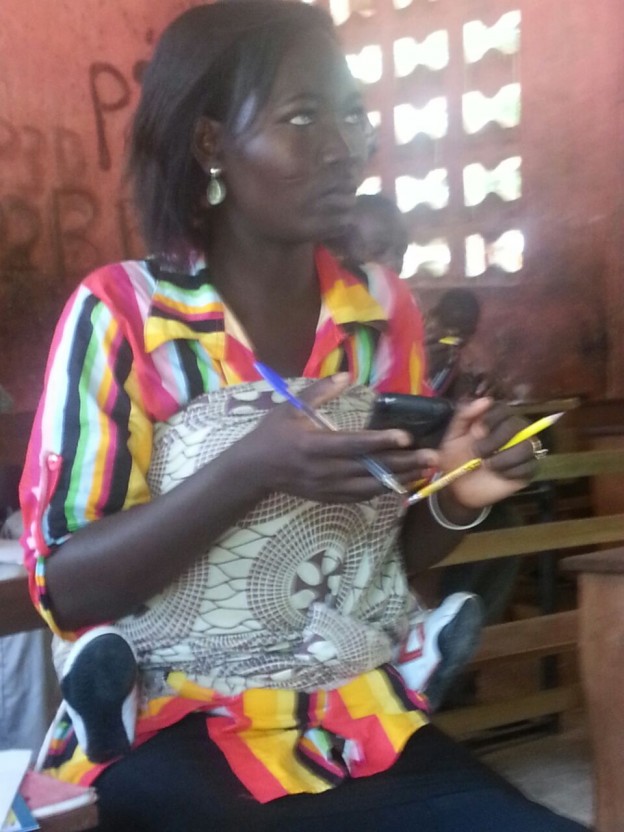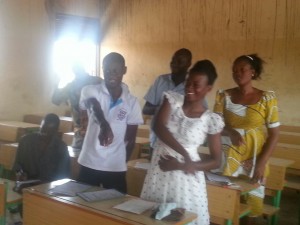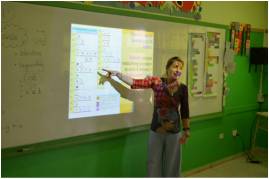While England may not top PISA’s international league tables, we almost certainly surpass our international counterparts in the amount and pace of educational reform that governments of all stripes have generated since the Education Reform Act in 1988.* In a nutshell, the aim of these reforms has been ‘to raise standards and narrow gaps’ in pupil performance.
Headline news has recently focused yet again on falling standards of education as national examination results for 16 year-olds this year show that: ‘GCSE grades have seen the biggest ever fall in the overall pass rate in the history of the exams.’ These grades apply to schools in the state sector and stand in sharp contrast, to the independent, private sector where more than a third of the children achieved the highest grade of ‘A’ – nearly five times the national average.
The private sector in England now stands at around 7% of the school population and is way beyond the means of the great majority of parents. Lloyds Bank recently estimated the costs of sending one child to private school from reception to Year 13 as £156,653 – annual fees having nearly doubled from an average of £7,308 in 2003 to £13,341 in 2016.

In a speech, earlier this year, our Chief Inspector of Schools, Sir Michael Wilshaw, delivered a scathing attack on the ideologies of both left and right-wing politics, which he holds responsible for a woeful lack of progress on narrowing the achievement gap between socio-economic groups. He said that, despite a range of initiatives, including the Pupil Premium**, no real difference has been made over the last decade:
‘The needle has barely moved. In 2005, the attainment gap between free school meal and non-FSM pupils in secondary schools was 28 percentage points. It is still 28 percentage points now.’
‘Our failure to improve significantly the educational chances of the poor disfigures our school system. It scars our other achievements. It stands as a reproach to us all.’
It is hardly surprising, that this has prompted a resurgence of fierce debate about the stubborn obstacles in the way of boosting the attainment of children from low income families and narrowing the gap in educational performance between disadvantaged children and their more advantaged peers.
The debate has been further inflamed by recent government proposals to provide more selective, state grammar schools ‘to give parents a wider choice of schools’ irrespective of their background circumstances.
All of this has coincided with the latest national curriculum assessments for children in the final year of primary school (11yr-olds) showing that fewer pupils reached the expected standard in reading than in writing and mathematics. Moreover, evidence of lasting improvements from numerous targeted interventions to help struggling readers is rare. It seems that hard won, early gains from programmes designed to help them ‘catch-up’ tend to fade out as they fail to keep pace with the overall rate of progress of their year groups.
It is little comfort to know that some of these problems are not unique to England. However, some would say that we are the product of a historical past that has led to a more stratified society than many of our international counterparts, and that divisions between state and private education are at the root of these problems. One of our most visionary and dynamic erstwhile school ministers – now Lord Andrew Adonis – commented on the divide between state and private education:
‘Over the entire second half of the 20th century, these prejudices made it exceptionally hard to do more than fiddle around at the margins of state-private partnership. This, in turn, bred a deep fatalism which is with us still. Everyone knows that the status quo is terrible – rigid separation between most of the nation’s most privileged and powerful schools and the rest. Yet no-one has a credible plan or will to do much about it except say how bad it is, why it’s someone else’s fault, and why it will never change because, well, this is England, it’s deep and cultural, and it all began with Henry VIII. It’s the same fatalism which greeted gridlock in central London before the congestion charge, hospital waiting lists before patients’ rights, and rain stopping play at Wimbledon before the roof.
The call now is for activists not fatalists. The future doesn’t have to be like the past.’
In a bold attempt to achieve a strong ‘state-private partnership’, he paved the way for academising the school system – a major reform in England which, though not without criticism, remains a firm commitment of the present administration.
However, progress has been patchy. These radical systemic/organisational changes have yet to make the looked for impact on helping less well-off children scale the rock face of disadvantage. For them it is much like bicycling a ‘penny farthing’ uphill – the higher they get the harder it becomes. Well-off parents, it seems, are able to equip their children with an Olympic class bike in the shape of private schooling that boosts their rate of progress. So what might we do, or do differently to make sure all children have an educational super bike?
It is of first importance, not to lower our educational expectations for disadvantaged youngsters. There are some telling examples of those from the most unpromising background circumstances succeeding against the odds. Moreover, by no means all privately educated youngsters from prestigious schools ‘make it big’ – so caveat emptor.
Secondly, school inspections show that schools of all types vary in quality ranging, in OFSTED terms, from ‘outstanding’ to ‘in need of improvement’. This suggests that systemic change alone is unlikely to be the tide that lifts all boats. It is trite but true to say that to be successful such change must secure high quality teaching irrespective of school type or location – hence, we would do well to curb our appetite for systemic reform and put more effort into the professional development of teachers and training those who support them in the classroom.
While it ought to be a given that every school should endow all of its children with the advantage of high quality teaching, inspection reports show this not to be the case. Rather, the picture remains one of too much variation in the quality of teaching within and between schools. The well-worn mantra that no school can be better than its teachers needs more that a facelift. It needs a change of heart.
This part of the forest might also benefit from a clearer definition of what ‘high quality’ looks like. In other words, establish a common language for a discourse on optimal teaching (and learning). Some promising developments worth close attention have ‘moved the needle’ by encouraging schools to be ‘self-improving’. One recent piece of research points to a positive impact on narrowing the gap in the reading performance of disadvantaged primary children by means of cost effective, well-taught phonic programmes (Centre for Economic Performance Paper No.1425 April 2016).
We do not yet know how well these gains are sustained for example, when children move from primary to secondary education. However, OFSTED Annual Reports show that, in this respect at least, the primary sector is doing rather better than the secondary sector in narrowing the literacy gap – much to the credit of primary teachers. Given that we know far more about how to teach children to read and write than ever before there should be no excuses for poor teaching in this territory.
The future does not have to be like the past, nor ought the best we can do now be the best that we should hope for. All that said, if we are to secure high quality teaching for all children in England, reformers and policy makers would do well to heed the words of Alvin Toffler: “Future shock [is] the shattering stress and disorientation that we induce in individuals by subjecting them to too much change in too short a time.”
*The Education Reform Act 1988 is widely regarded as the most important single piece of education legislation in England, Wales and Northern Ireland since the ‘Butler’ Education Act 1944. (Wikipaedia).
**The pupil premium is additional funding for publicly funded schools in England to raise the attainment of disadvantaged pupils of all abilities and to close the gaps between them and their peers.
Jim Rose
9th September 2016














